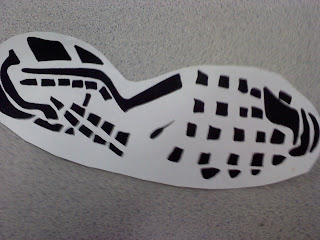
It was a late friday night after a heated tennis match. The victim ( Ms. Carulpoo) had just played in the Wilmington Battle of the Sexes tennis match against the imfamous Mike Kelly who haas never lost a game. But htat friday night would soon be the end of his undefeated legacy and the beginning of a vicous homicide evolving from the bitter revenge of a lost fame. Ms Carulpoo was found dead by her nieghbor Ms. Nosienews who saw she hadn't seen her or this mysterious male figure who enter the house late that night leave which lead to her snooping around. From her interview we were able to determine that the only 2 people in the house the victim and the mysterious man oh and her cat monkey face. Our forenaic scientist were able to find a number of clues including: a sample of O blood, fibers used in tennis rackets, a torn letter, white male hair, cat hair, and a shoe print. So the crime goes like this, Ms. Carulpoo had her friend Sam (the construtionist) come over to show her a good time explaing the shoe print which resembles that of a construction worker but what Mrs. Nosienews didnt see is him leaving the house @ 3 in the morning.Once Sam left Mike Kelly slips in the house pretending to be Sam. Then boom Mike grabs the tennis racket and beats Ms. Carulpoo's face to death. As he was cleaning up the scence the racket tore leaving particles behind explaining the the fibers. But what would shock us the most is that the O blood is not that of the vitcm seeing as Mike wipe all traces of her blood away. So I bet your wonder how did it get there then, well the cat Monkeyface came runnig in the room scaring Mike who cut his arm with the torn racket leaving his blood. Escaping without being seen suspect Kelly left what he thought would be the perfect crime of revenge but soon learned the heavy hand of the lam and forensic science!








 The evidence proving mankind's interest in fingerprints can be dated back to the prehistoric period. Discovered in Nova Scotia was pictures of a hand with ridge patterns. To farther prove the interest in fingerprinting thumb prints from the ancient Chinese on clay seals. Furthermore in ancient Babylon, fingerprints were used on clay tablets for business transactions.
The evidence proving mankind's interest in fingerprints can be dated back to the prehistoric period. Discovered in Nova Scotia was pictures of a hand with ridge patterns. To farther prove the interest in fingerprinting thumb prints from the ancient Chinese on clay seals. Furthermore in ancient Babylon, fingerprints were used on clay tablets for business transactions.


